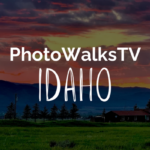
Jackson Hole, Wyoming Travel Itinerary
June 20, 2024
Victor, Idaho’s Teton Valley Travel Itinerary
June 21, 2024This summer, many of us will head west for wide open skies, incredible scenery, American food and the chance to be in the great outdoors.
Zion National Park, Grand Canyon, Bryce, Yosemite and the California coast routinely get tons of visitors during the summer. Those who are willing to drive a little further from Los Angeles (or fly) will venture to Yellowstone and the Grand Tetons National Park, staying in either ultra-pricey Jackson Hole or Bozeman, Montana, which is more affordable, but a good 90 minute drive from the Yellowstone entrance.

Has the Yellowstone TV show reawakened your love of the American West?
If so, may I suggest a visit to Cody, Wyoming, whose tourist board refers to the tiny town of 5,000 people as “Cody Yellowstone.”
And why not? We’re talking about a town that was founded by none other than William “Buffalo Bill” Cody back in the late 1800s, as a place he hoped would be the next Denver, a gateway city to the nation’s first national park, Yellowstone.

Today, Cody looks much like it probably did back then, a little Wild West downtown with about six blocks of businesses, including great western clothing shops, cafes and restaurants and Cody’s old hotel, the Irma, named after his daughter, where 1800’s era gunfights with cowboys are staged every night during the summer. Peek inside, and the rooms are as nostalgic as ever, with poster beds and ruby red awnings.
Down the street is the big Buffalo Bill Center of the West, a collection of five museums that show the history of Bill Cody’s life as a western showman, how native Americans lived in the area and great western art. Cody calls itself the “Rodeo Capital” of the world, because the Cody Stampede Rodeo plays all summer long, not just for a few weeks like in other western towns.

But the main attraction to Cody Yellowstone has to be the natural beauty, the snow-capped mountains (in early summer) and dark green grass and all the wildlife.

On my visit, I accompanied a fellow photographer, Amy Gerber, and we photographed bears, moose, foxes, owls and bison on the outskirts of town. We didn’t have to enter Yellowstone to see the critters. Photo tip: I watched so many people struggle trying to get great shots of the wildlife, but it wasn’t to be. Even with the improved telephoto lenses on recent phones, they’re still no match for big cameras and their giant zoom lens. I photographed this Bison from at least 100 feet away with a Sony RX10IV and the 600mm lens.

If you want to capture wildlife this summer, you’ll need a big camera. If you don’t feel like springing $1,700 for the RX10, or $2,000 and up for cameras like the Sony A7IV or Canon R series, may I suggest renting? The website Lensrentals.com can outfit for you with a week’s rental for just over $200. And you can mail the camera back in the supplied box when you’re done.

If you go to Cody:
Flights: Can get you from LAX to Cody’s airport via United, but you’ll have to stop in Denver and pay over $500.
Alternative Flights: You can fly to nearby Bozeman direct for around $300 on United, rent a car (which you’ll need for Yellowstone anyway) and drive three hours to Cody. You can even drive through the Gardiner Yellowstone entrance, near Bozeman and swing down to Cody.
Drive. It’s a long one from Los Angeles, around 19 hours, but very memorable. From LA, you go through Las Vegas, the red rocks of Southern Utah, the mountains of northern Utah and the open skies of Wyoming, until you hit the top north of the state and Cody. Overnight stays: Vegas is a four hour drive from Los Angeles, while the southern Utah hamlet of St. George is six hours away. If you can make it to the Salt Lake City area, that’s a 12 hour drive. Just add another 7 hours the next morning.
Cody itinerary: Spend a few days in an and around Cody, tour Yellowstone, visit the Grand Teton Park (a two hour drive from the E. Yellowstone entrance) about four hours away and stay overnight near there. Rooms in Jackson start at around $350 a night mid-week, compared to around $200 a night in nearby Victor, where you can see the other side of the Tetons. The Teton Pass road which enabled thousands of workers in Victor and nearby Driggs to commute to Jackson is currently closed, after an early June road collapse. A two-hour workaround route is currently the only way to get to Jackson, but officials say they will have a quicker detour road available by the end of the month.

 Scripps News
Scripps News



